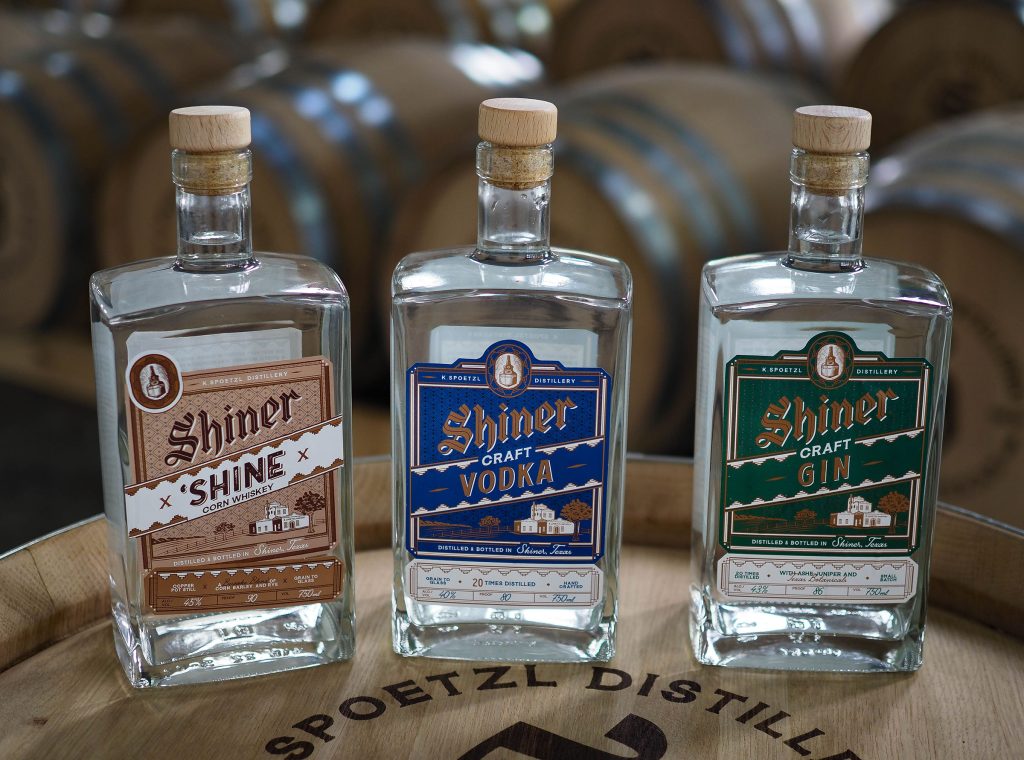Preference the Finest Galveston Whiskey: Neighborhood Distilleries and Special Choices
Preference the Finest Galveston Whiskey: Neighborhood Distilleries and Special Choices
Blog Article
The Ultimate Distillery Experience: From Grain to Glass, Whatever You Need to Know
Beginning on a trip through the complexities of the distillery procedure unveils a world where scientific research meets creativity in the production of spirits. From the careful choice of grains to the careful crafting of each bottle, every step in the manufacturing line plays an essential function in forming the last product that enhances our glasses.
The Art of Grain Choice
Picking the ideal grains is a crucial action in the purification procedure, determining the flavor profile and high quality of the last item. The sort of grain chosen substantially affects the personality of the spirit being generated - Galveston Whiskey. Usual grains made use of in distillation include barley, wheat, corn, and rye, each conveying distinctive tastes and features to the last item

Beyond taste factors to consider, the quality and purity of the grains are vital. Distillers diligently resource grains to guarantee they are totally free from pollutants and have the essential starch content for fermentation. By mastering the art of grain selection, distillers lay the foundation for creating outstanding spirits that captivate the taste.
Distillation Process Demystified
Having established the foundation with careful grain option, the purification procedure arises as the transformative phase where the significance of the selected grains is unlocked and refined right into a perky kind. Purification is a systematic procedure that relies upon the concept of separating alcohol from a blend based on differences in boiling factors. As soon as the fermented mash is warmed in the still, the alcohol vaporizes at a lower temperature than water and other substances, enabling its extraction. As the alcohol vapors increase and pass through the still, they condense back into fluid kind, causing a greater proof extract. This extract, likewise called the 'heart cut,' is the purest and most desirable portion of the purification run. Nonetheless, the process doesn't finish there; several distillation runs or additional actions such as maturing in barrels may further improve the spirit, improving its character, taste, and complexity. Comprehending the ins and outs of the distillation procedure is crucial for generating premium spirits that captivate lovers and connoisseurs alike.
Barrel Aging and Taste Growth
Throughout the barrel aging process, spirits undergo a transformative journey as they communicate with the timber, soaking up nuanced tastes and creating a rich complexity. The sort of wood utilized, normally oak, dramatically affects the last preference of the spirit. Oak barrels are preferred for their unique buildings that enhance the taste account. As spirits age in the barrels, they remove substances such as vanillin, lignin, and tannins from the timber, adding to the growth of scents like vanilla, sugar, flavor, and also hints of toasted oak.
In addition, the aging process permits oxidation to occur, leading to more chemical responses that mellow the spirit and round out any kind of rough sides. The porous nature of wood also makes it possible for the spirit to take a breath, promoting the combination of flavors over time. Relying on the period of aging and environmental conditions like temperature and humidity, spirits can acquire different qualities, from refined timber notes to deep, complex tastes that make each batch unique. Eventually, barrel aging plays navigate to this website a critical duty fit the distinct preference profile of each spirit, supplying a sensorial journey for connoisseurs to relish.
Craftsmanship in Bottling and Identifying
As spirits reach their ideal taste profiles with barrel aging, the thorough craftsmanship in labeling and bottling ends up being the following vital action in offering a premium product to customers. The process of bottling and identifying is an important facet of the overall distillery experience, as it is the final touchpoint before the item reaches the hands of consumers (Distillery in Galveston). Workmanship in bottling involves making sure that each container is loaded precisely with the spirit, thinking about aspects such as uniformity in fill degrees and the prevention of any type of pollutants getting in the bottle

Sampling and Appreciating Great Spirits
To totally appreciate great spirits, one need to involve all the detects in a mindful and purposeful tasting experience. When tasting fine spirits, it is vital to start by observing the spirit's appearance. Keep in mind the shade, clearness, and viscosity of the liquid in the glass. Swirl the spirit delicately to launch its fragrance. The nose is an essential sense in sampling spirits; take a moment to breathe in the facility fragrances deeply. Next off, take a small sip and let it linger on your palate. Take note of the various flavors that unfold this content - from pleasant and fruity notes to spicy or great smoky touches. Consider the mouthfeel, noting if the spirit is smooth, velvety, or fiery. Swish the spirit in your mouth to completely experience its texture and preference. Lastly, ingest slowly and appreciate the remaining surface. Great spirits often leave a positive aftertaste that can disclose much more about the workmanship and high quality of the beverage. By involving all your detects in this fashion, you can truly enjoy and appreciate the complexities of great spirits.
Conclusion
To conclude, the distillery experience encompasses the detailed art of grain selection, the specific purification process, the transformative barrel aging, the thorough craftsmanship in identifying and bottling, and the advanced method of tasting and appreciating great spirits. Each action in the production procedure plays a critical role in developing premium spirits that captivate the senses and delight connoisseurs worldwide.
The kind of grain selected substantially affects the character of the spirit being generated. By grasping the art of grain option, distillers lay the foundation for developing outstanding spirits that mesmerize the taste buds.

Report this page